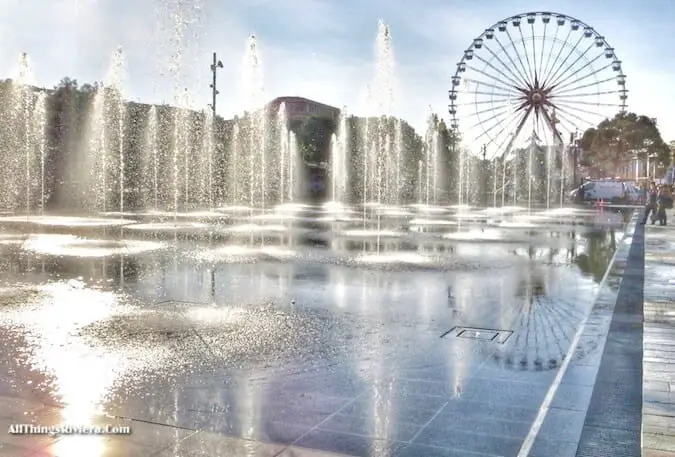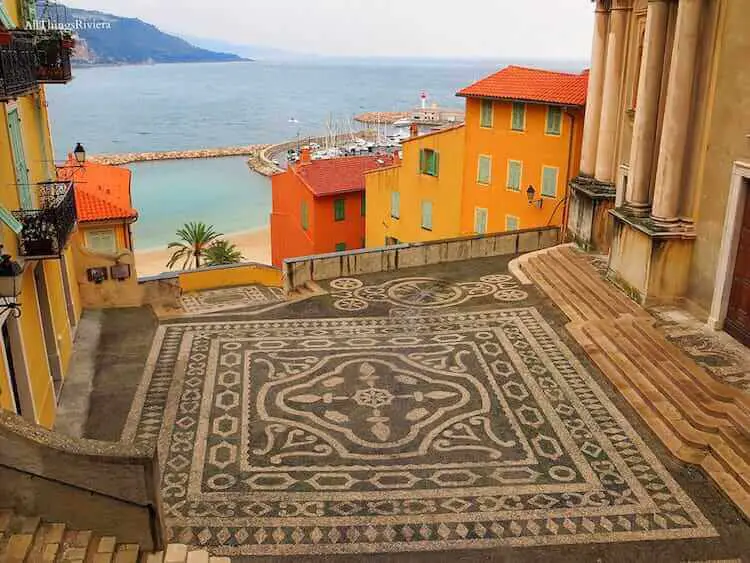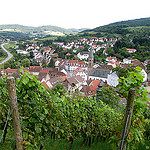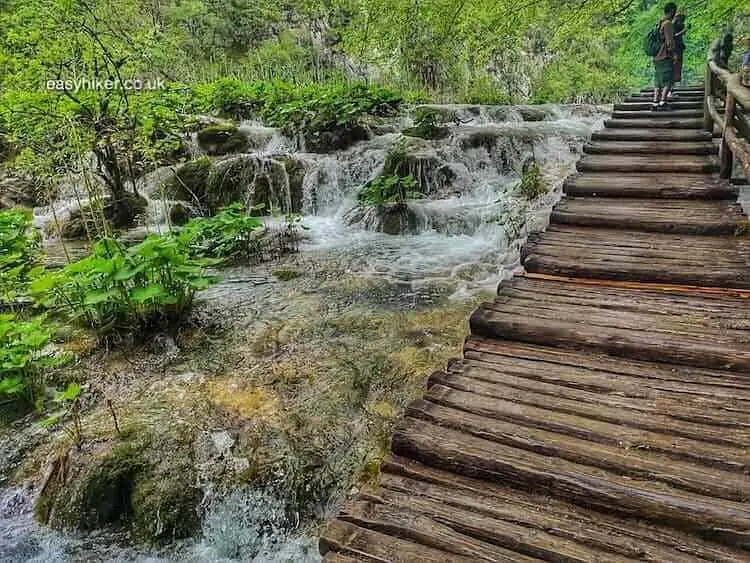Some people find it fashionable to sneer at Monaco. There is nothing categorically wrong about sneering, I enjoy the occasional sneer as much as anybody, but for people who are travelling to see the world, it is the most counterproductive attitude you can imagine.
After all, travelling is all about discoveries: about finding new things and about finding out new things about them, and locking up our minds so that no new evidence can intrude on old certainties about what is “cool” or “proper” is the safest way to assure that we will not learn anything at all.
This is a post that invites you to explore Monaco free from the burden of old certainties. See it with fresh eyes.
You will find many things to dislike, but also many things to like.

Make up your mind, but make sure it is your mind and not somebody else’s. That’s why biases are so bad: they are not our own ideas but things that other people have put into our heads. See – and judge – for yourself.
Here is bias number one about Monaco: that it is not only small but tiny. Granted: Monaco is not Russia, in fact it is the second smallest country on earth (beaten only by the Vatican), and its total surface area of 2 square km is little more than half that of New York’s Central Park.
But surface is not all: Monaco is the Chile en miniature of the Riviera Coast, long and slim (in places just two blocks deep), with a slope that adds texture and depth. Exploring it on foot can involve a surprisingly long and surprisingly challenging walk.
Which is why we shall not repeat the mistake that many visitors commit who are taking the bus to the Casino – Monaco’s geographical and spiritual centre (what St Peter’s is to the Vatican) – for the simple reason that the centre is not the ideal starting point for the exploration of a long, slim and sprawling shape.
No: we shall walk through Monaco from end to end, starting in the extreme east of the principality where the bas corniche coastal road suddenly receives a jolt of 100,000 Volt up its spine to turn the calmly provincial seaside scenery into a hallucination of skyscrapers, busy flyovers and bustling traffic.

Strolling through Monaco from End to End
Take the stairs on the left hand side of the large roundabout to walk down to the Avenue Princess Grace past the grounds of the Monaco Country Club: a contradiction in terms as splendid as the Bolivian Navy, since the one thing Monaco does obviously not possess is “country”.
Land, in fact, is in such short supply in the principality that the Country Club – host of the Monte Carlo Masters tennis tournament – was built on French territory (yes, we are meandering a little back and forth across the border).

Follow the Avenue through another serpentine curve toward the right to re-enter the principality and Monaco’s seafront quarter of luxury hotels.

The Larvotto waterfront on your left hand side – Monaco’s largest beach – is currently a large building site (new facilities are under construction), so turn your eyes right for some interesting views of breathtakingly modern architecture such as the Odeon Tower (the second highest building on the Mediterranean Coast whose penthouse can be yours for a trifling 387 million USD) …

… as well as some “old world” buildings that look a little lost in their new surroundings.
The Villa Sauber was built in 1903 for the German-English society painter Robert Sauber and now houses the New National Museum of Monaco.

Continue past the Grimaldi Forum – the principality’s main congress centre – and the Japanese garden …

… to the Fairmont Hotel whose most famous feature – the “fairmont hairpin” that leads to its entrance, Formula One motor racing’s legendary chicane – lies on your right, hidden from view. (You must cross the street into the Avenue des Spéluges to have a peek.)
We are now on the course of the Monaco Grand Prix, still – and despite its flaws – motor sport’s most glamorous event.
If you have ever watched as much as one lap of the race on TV, the (safely walkable) underpass below the hotel and its exit …

… will be familiar sites to you.
Towards the end of the underpass, take the brief outdoors detour that will offer you a scenic overview of Monaco’s yacht harbour, the Port Hercule …

… and a look at the ship-shaped Monaco Yacht Club, designed by Norman Foster.

Walk briefly back into the underpass and look for the signs that direct you to the Casino. You will have to cross the street underground – using an underpass of the underpass (yes, Monaco is a town that exists on more levels than one) – before a lift takes you up to the principality’s most famous building.

Stroll through the gardens: there are many things to discover here, including some remarkable works of public art.

If you are interested in luxury shopping, you can explore the warren of streets in the “Carré d’Or” just to the north of the Casino and the Hotel de Paris (the white building at the top of the stairs from the Casino gardens).
Alternatively, turn left, down the Avenue d’Ostende (which is also famous from Formula One racing as each lap’s first long straight) and eventually around the harbour.
Port Hercule’s northern quayside often hosts exhibitions and events, and on the day we were visiting, final preparations for the Historic Rally Monte Carlo were underway. (The “senior twin” of the vintage car rally, the opening race of the 2020 World Rally Championship, had been completed a few days before).

Just before reaching the end of the port area, turn right into the pedestrianized Rue Princess Caroline and, at the end of this street, left into Rue Grimaldi.
At the roundabout, you will see Monaco’s old train station on your left (behind the market square) and, across the street, the stairway up the rocher.
On the top of this “Rock”, you will find one of the most boring “old towns” along the Riviera coast and some of its daintiest toy town architecture (this would be the Royal Palace – I warned you that I liked a good sneer as much as the next man).
The walk around the “Rocher”, however, is highly scenic and rewarding, featuring the Cathedral and the Oceanographic Museum, easily Monaco’s most magnificent historic building.
Alternatively, turn right at the roundabout for a visit of the Fontvieille quarter, which was constructed from the late 1960s onward on reclaimed land.
Take the escalator (left side of the street, 50 metres behind the entrance to the tunnel) down to the shopping centre – where, in the large supermarket, you may be able to spot some ex-pat Formula One drivers and tennis players who have taken up residence here – and the Fontvieille marina, which may be not as exclusive as its next-quay neighbour but is certainly no less picturesque.
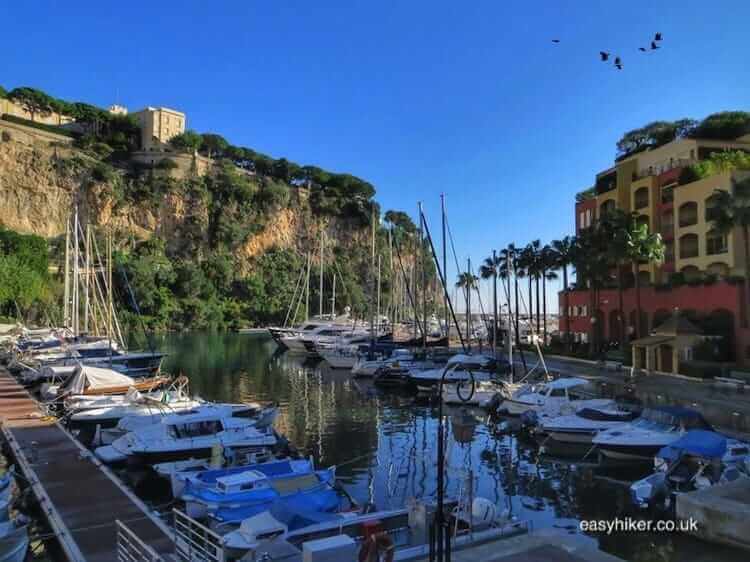
Turn right behind the shopping centre until you reach the Stadium Louis II, home of Ligue 1’s AS Monaco, …
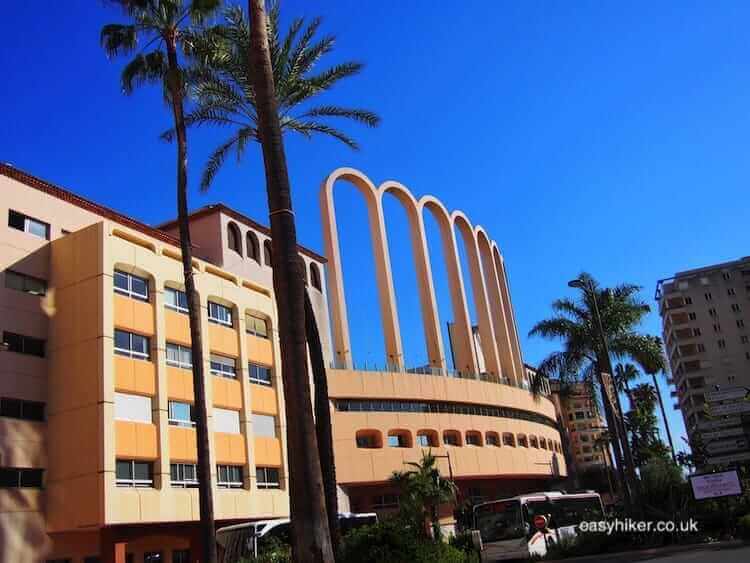
… which marks the western end of Monaco’s territory. Its “twin stadium” on the far side of the Avenue du Port, the Stade Didier Deschamps, already belongs to Cap d’Ail – and therefore to France.
This walk of Monaco from end to end ends here. Use one of the stairways on your right – or the elevator whose shaft you will soon spot by the side of the street – to access the main road one level above.
A few metres towards your left, you will see two bus stops from where line 100 can take you to either Nice (opposite side of the road) or Menton.

